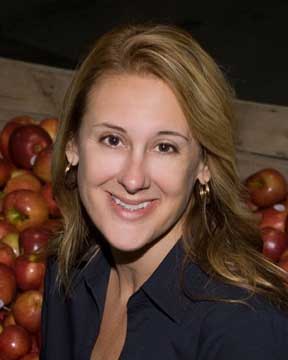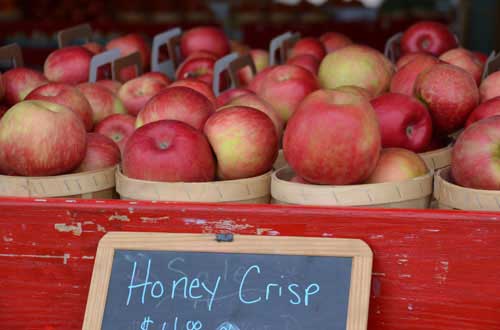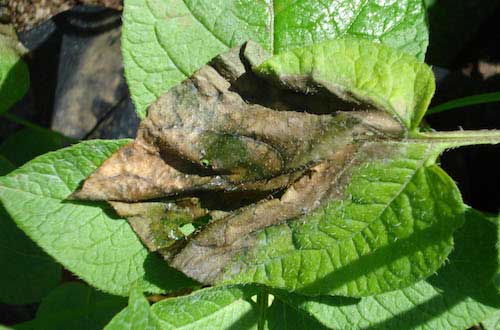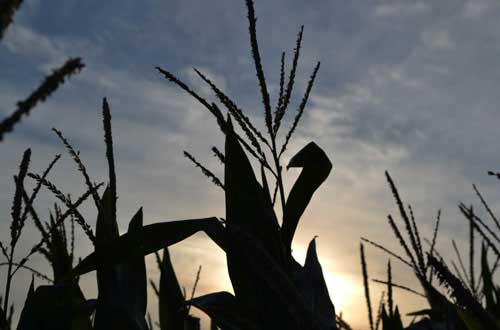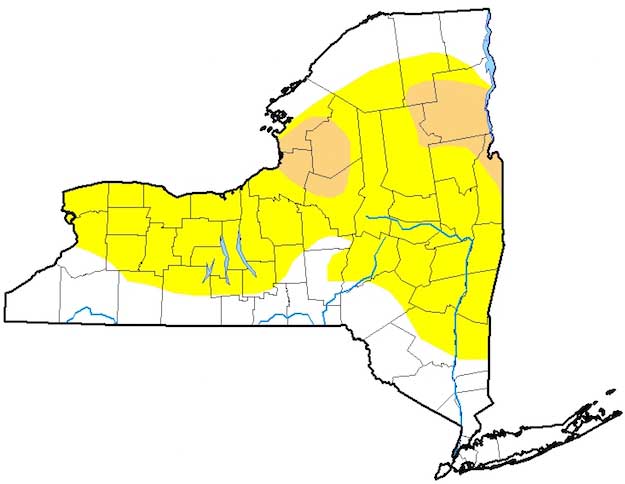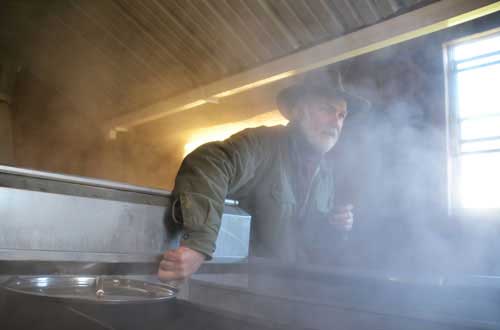Press Release, Gov. Andrew Cuomo
Governor Andrew M. Cuomo today announced new agricultural trade partnerships between New York and Puerto Rico to strengthen both the Puerto Rican economy and the ties between the two communities as Puerto Rico continues to recover and rebuild.
The Governor pledged to help Puerto Rico rebuild their agriculture and food supply systems, and work with local farmers, the University of Puerto Rico, and other partners to provide technical assistance and expertise to rebuild the industry. Ten months after the devastation of Hurricane Maria, agricultural trade between New York and Puerto Rico is rapidly growing with the expansion of New York-grown apples, cabbages, and onions into Puerto Rico and watermelon, mangoes, and pumpkins grown in Puerto Rico becoming available in New York. Conservative estimates say these agricultural trade opportunities will exceed well over $1 million in economic benefit to both New York and Puerto Rico.
The Governor made the announcement while in Puerto Rico leading a delegation of SUNY and CUNY presidents and students, as well as nonprofit partners, labor leaders, and elected officials, to support the ongoing efforts on the island. This trip marks the Governor’s fifth trip to Puerto Rico in the wake of Hurricanes Maria and Irma, and part of the third deployment of SUNY and CUNY student volunteers since the initiative began.
“The people of Puerto Rico are our brothers and sisters and in the face of the federal government’s ongoing neglect, New York will continue to do everything in our power to help them rebuild their economy,” Governor Cuomo said. “This agricultural partnership will create opportunities for local farmers, stimulate economic growth, and help this vital sector recover, and will further strengthen the ties between Puerto Rico and the great state of New York.”
As established in the Build Back Better report assessing the hurricane damage, Hurricanes Irma and Maria severely impacted Puerto Rico’s agricultural sector, primarily made up of small, family-owned farms, with approximately 80 percent of the crop value destroyed, a loss of nearly $250 million to the Puerto Rico economy. The destruction of planted crops caused a loss of locally grown foods, limiting nutritional options, driving up food costs and contributing to food insecurity. In addition, over 2.2 million animals were lost to the storm and the agricultural infrastructure experienced damages in excess of $1.8 billion. This represents 40 percent of the total value.
As with Puerto Rico’s other rebuilding efforts, New York State is committed to helping Puerto Rico rebuild their agriculture and food supply systems stronger than before. Governor Cuomo will launch a comprehensive, targeted effort to work with local farmers, the University of Puerto Rico and other partners to assess immediate needs, provide technical assistance for short-term solutions and develop a strategic plan to bolster the agricultural industry, support food security and grow the Puerto Rico’s economy. As part of this initiative, the Governor will convene a team of experts, led by Commissioner Ball, that will meet with partners at SOMOS.
These actions will focus on:
• increased trade and exchange of food and agricultural commodities between Puerto Rico and New York,
• co-ventures in food innovation
• food security for underserved populations and exploring the development of food banks
• collaboration on best practices in food and beverage safety, as well as, standards and technical guidance for food safety.
Caribbean Produce, Puerto Rico’s largest produce distributor, has thus far imported 186,200 pounds of apples from across New York – including Rome, Empire, Red Delicious, Gala, Snap Dragon and McIntosh apples from New York Apples Sales and Hudson River Fruit. Caribbean Produce has also imported 126,000 pounds of cabbage from Torrey Farms in Elba, Genesee County, and 84,000 pounds of onions from Minkus Family Farms in New Hampton, Orange County, with plans to import New York-grown potatoes, carrots, turnips, beets, and more produce. Caribbean Produce is currently distributing Red Jacket Orchard juice from Geneva, Ontario County. Hudson River Fruit, Red Jacket Orchard and Minkus Family Farm are all a part of the State’s New York State Grown & Certified program.
New York has imported 100,000 pounds of seedless watermelons from Finca González and Soto Farms in Guánica, Puerto Rico, sold at retail in the Hunts Point Terminal Market in the Bronx, with additional containers planned in the weeks and months ahead. Caribbean Produce will soon export tropical pumpkin to New York from Finca Gonzalez, as well as mangoes from Gan Eden Farm in Santa Isabel. By conservative estimates, these partnerships will generate well over $1 million in economic impact in both New York and Puerto Rico in the long term.
Gan Eden Farm was one of the working sites for State University of New York Maritime, SUNY Albany and SUNY ESF students deployed as part of Governor Cuomo’s NY Stands with Puerto Rico Recovery and Rebuilding Initiative to assist with recovery efforts in the wake of Hurricane Maria.
These partnerships are made possible by the New York State Office of Trade and Tourism opened by Governor Cuomo in November 2015 in Old San Juan. NYSOTT promotes mutually beneficial tourism opportunities and strengthens economic ties between the state and the island. NYSOTT also operates the New York State Discovery Center, a Taste NY and I LOVE NY store promoting New York-made and produced products.
The distribution of Saratoga Spring Water, Asarasi Sparkling Tree Water and Roxy Mountain Maple Products in Puerto Rico also builds on a number of initiatives announced by Governor Cuomo in September 2015 designed to help Puerto Rico expand its economy and foster a mutually beneficial economic development relationship between Puerto Rico and New York State, including opportunities for business and technology development, agriculture, energy and infrastructure.
New York State and Puerto Rico have been actively engaged in conversations to grow and expand trade opportunities between New York businesses and Puerto Rico and vice versa.
“The Department was so pleased to be a part of the Governor’s Agriculture Trade Forum several years ago, where we had meaningful, positive conversations with our friends in Puerto Rico about the opportunities to work together,” said State Agriculture Commissioner Richard A. Ball. “Today, while we stand strong alongside Puerto Rico during their recovery, I am proud to see that those discussions are now resulting in actions that will not only provide a boost to their rebuilding efforts but also be the bridge to new markets for New York growers.”
Return to top



























